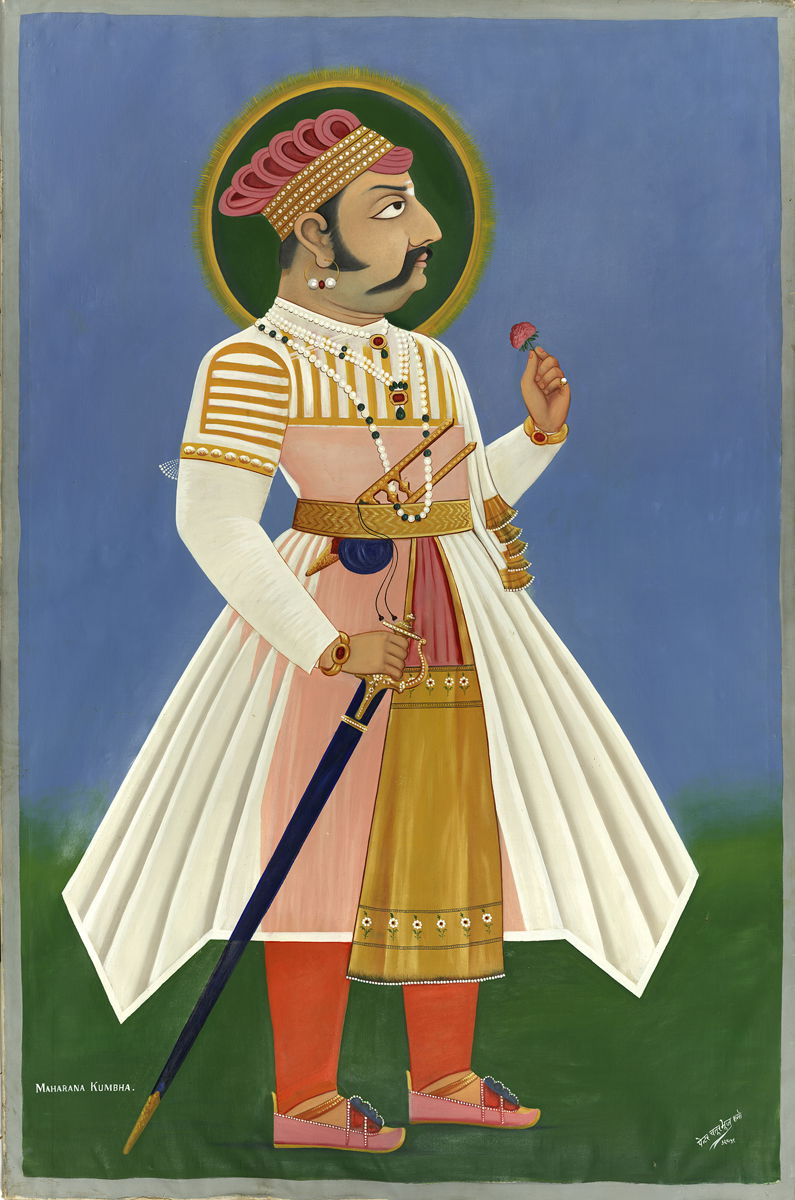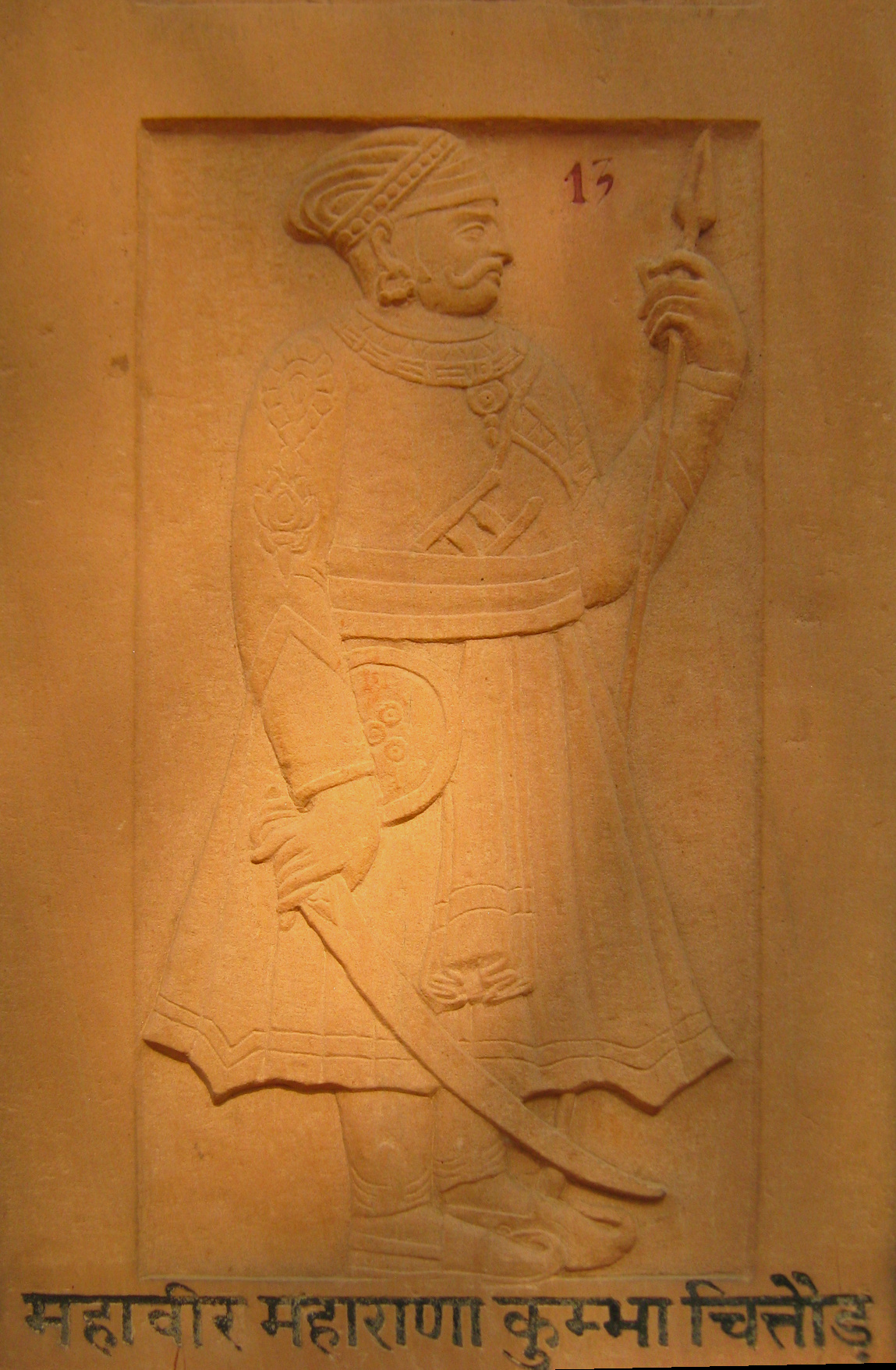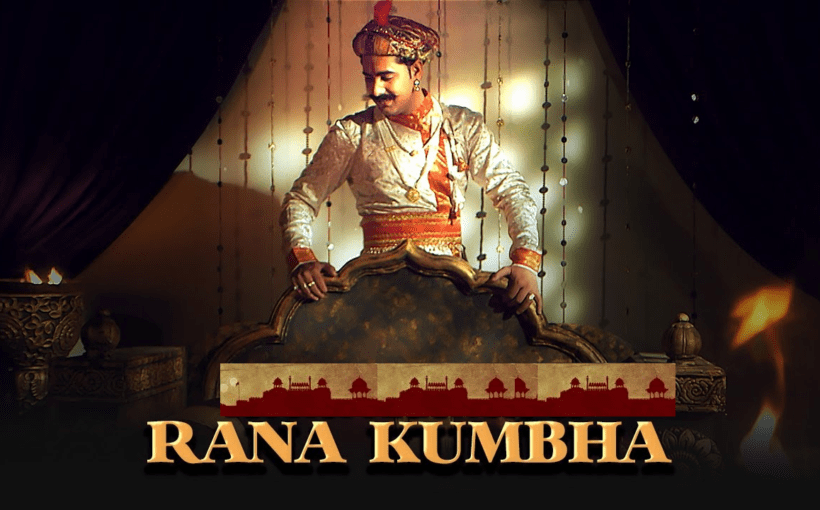The Rajputs (Sons of Kings) known for their Indomitable courage, valor and Chivalry had fought tons of titanic battles in order to protect their land and Indian Sub-continent.
They are regarded as the best cavalry men in Ancient and Medieval India. From Bappa Rawal who defeated the invading Arabs in 8th century CE and kept them outside of the Indian Heartland to the great Maharana Pratap ,all fought to their last breath in order to protect their people and the Indian Sub-continent. One such unsung hero who has been forgotten by Indian history is Rana Kumbha of Mewar.
We remember the names of undefeated foreign kings like Alexander the Great, Genghis Khan and many more but we forget our own warriors who remain undefeated throughout their reign.
Rajput warlords like Rana Sanga are remembered only because of his one and only loss that he suffered in his whole life, from Babur at battle of Khanwa ignoring the fact that before Khanwa he had defeated the Mughals at Banaya and before Mughals, he had twice defeated the Delhi Sultanate.
In this article we will tell you about one such Undefeated Rajput warrior King- Rana Kumbha, who relentlessly defeated the Sultanates of Malwa, Gujarat and not only protected Mewar in his 36 years long rule but also expanded the territorial span of the kingdom to new regions.
Content
Rise of the Kumbhkaran : Rana Kumbha’s Early Life
In 1398, Timur sacked Delhi and plundered the already weakening Delhi Sultanate of the Tughlaq’s. After this some other sultanate rose to power. Sultanate of Malwa, Jaunpur and Gujarat who initially were part of Tughlaqs became independent.
Mewar at this time was surrounded by the powerful enemies who were fond of expansionist policy. Sultanates of Gujrat and Malwa threatened Mewar form south and Sultanates of Nagaur and Delhi threatened it from the North. After Rana Hammir, several other Rajputs kings came to the throne of Mewar.

Maharana Kumbha (Kumbhkaran) was born on 1417 CE to Queen Sobhagaya Devi and Maharana Mokal. After the assassination of his father i.e. Rana Mokal by his brothers Chacha and Mera in 1433 CE, 16 years old Rana Kumbha became the ruler of Mewar.

Rana Kumbha soon took the revenge of his father’s death by killing Mera and Chacha.
Rana Kumbha’s Battles against Sultanates : Multiple defeats of the Sultans to Mewari Rajputs
Surrounded by the enemies forces from all sides ,the position of Mewar especially Chittorgarh became vulnerable. Seeing this, the sultan of Malwa i.e. Mahmud Khilji prepare to attack Mewar in 1437 CE. But it was Rana Kumba ,who attacked Malwa first and defeated Mahmud Khilji at the battle of Sanrangpur (present day Madhya Pradesh) in 1437.
The charge of the Rajputs was so fierce that the Sultan of Malwa was forced to retreat all the way back to Mandu.
Later Maharana Kumbha decided to siege Mahmud Khilji’s capital (Mandu). Later Rana Kumbha captured the sultan but he followed the code of Dharma and later freed him. To remember this, great victory over the Malwa Sultan Rana Kumbha made a monument known as Vijay Stambh (dedicated to Lord Vishnu) at Chittorgarh.

But later in 1442 Mahmud Khilji attacked Kumbhalgarh and plundered Bana Mata Temple. He send 2 units of his army to attack Mewar at Mandasaur and Chittor.
When the news of attacking Kumbhalgarh reached Kumbha ,he immediately set up his army to finish Khilji once and for all.
The two army met on the fields of Mandalgarh in 1442 the resulted was same. Mahmud Khilji was defeated again and forced to retreat towards Mandu.
But this was not enough for Khilji, he again decided to attack Mewar and in 1446 he was again crushed by Rana Kumbha in the battle that was fought along the bank of river Bana.
In 1453, there was a political chaos in the sultanate of Nagaur. Rana Kumbha took the advantage of the situation and made the Sultanate of Nagaur under his rule. But later in the same year the sultan of Nagaur broke the alliance and invite the Sultans of Gujarat and Malwa to attack Mewar.
Soon after this Qutub ud din Ahmed Shah (Ahmed Shah 2) send his force towards Nagaur. Surrounded by the enemy forces from all sides Rana Kumbha made a friendly alliance with another Rajput king whose name was Rao Jodha.
After increasing his strength, Rana Kumbha decided to smash frontiers of Nagaur sultanate. In 1455 he crushed the armies of Nagaur and Gujarat and razed the fort of Nagaur to the ground.
There was one incident that happened during this battle the Rajputs went on total rampage and Sacked the Mosque of Nagaur which was similar to the incidents what Sultans of Medieval India did, which was a bit too ruthless.

After the span of 10 years, Mahmud Khilji again attacked Mewar. But this time he was not alone. The sultan of Gujarat and Malwa made a pact between themselves (Treaty of Champaner) in order to attack and divide the region of Mewar equally after victory.
They decided to invade Mewar from two sides. In 1458 CE the sultan of Gujarat attacked from south west region of Mewar while Mahmud Khilji attacked form south of Mewar. This war continued for a long time.
Rana Kumbha decided to adopt the tactics of guerilla warfare as it was not possible for the Mewaris to fight on two fronts. The main aim of Rana Kumbha was to allow the enemy forces to raid deep inside Mewar’s territory and when this happen the passage of cutting the supply lines of the invading army became an easy target.
The Rajputs used the geography of Arravalli mountain range to further harass the enemy forces. The war resulted in a total disaster for the two Sultans and later they retreated towards their dominions.
![Rana Kumbha (676) [Paperback] [Jan 08, 2012] Jagjit Uppal | JAGJIT UPPAL |本 | 通販 | Amazon](https://images-na.ssl-images-amazon.com/images/I/91Oa7rhOoyL.jpg)
But this defeated Khilji wasn’t satisfied after being defeated so many times and was defeated for the fifth time when he attacked Chittorgarh in 1467 CE.
Other Side Of the Undefeated Rana Kumbha: Visionary Builder, Scholar and Brilliant Ruler
Rana Kumbha remains among a very few select kings of World History to have never lost a battle and remain undefeated till his last breath. But his military achievements are not the only thing he is remembered for.
It was during his rule that Mewar Kingdom flourished in all fields. He commissioned many great works of art, literature & architecture that stand even today and are a glorious reminiscent of his rule. Vijay Stambh is the most famous of these but the list goes long. Mamadev Temple is another marvel of the Rajasthani architecture that flourished during his time.
Out of the 84 fortresses that form the defense of Mewar, 32 were build by Rana Kumbha & most of the main parts of the iconic Kumbhalgarh Fort were also built under him.

Apart from architecture, many great works of art and poetry were made in Kumbha’s time. Rana Kumbha, being a scholar, who had a hold of multiple languages like Maharashtrian, Kannada and his native Mewari. He himself also played the Veena and was well versed in Vedas, Upnishads & an ardent devotee of Lord Vishnu.
But perhaps the most glorious part of the legacy of Rana Kumbha is not any fort or palace, but his successors to the Throne of Mewar- the likes of Rana Sanga and the Great Maharana Pratap, who are immortalized in History for their fight against every Invader and for living by the same ideals of freedom, high self esteem and Dharma that Rana Kumbha stood for.
Like what we are doing? Donate to our Cause
If you Support what we are doing and would like to contribute to help us grow and reach more Indians to teach them more about such forgotten historic Indian Heroes and stories, please consider donating any amount. It will help us grow


आपने हमें हमारे देश के गौरवपूर्ण इतिहास से अवगत कराया. माँ ओर महादेव आपको शक्ति दे.
धन्यवाद । हम ऐसे ही काम करते रहेंगे। हो सके तो donate button से आर्थिक सहायता करके इस क्रांति से अपना योगदान दे ।
Endless salutes to you..and a lot of love..never ending love..and respect..for ever and ever ..